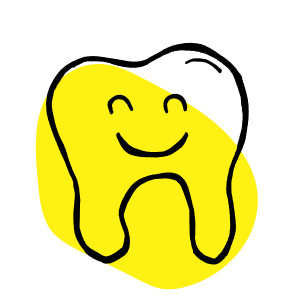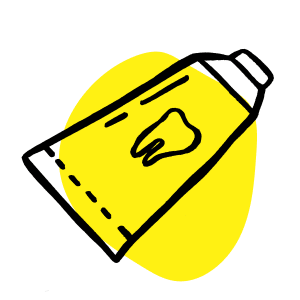What is a
Dental Check-up?
Dental Check-up?
Everything you need to know about dental check-up services at the dentist
It has long been recommended by health experts that visiting the dentist on a regular basis for a dental check-up is the most cost-effective and time-saving method to keeping your teeth, gums, and general oral health in the best condition for as long as possible. Currently, 1 in 5 Australians avoids visiting the dentist each year for this very quick and very simple procedure to ensure they don’t end up with a costly and painful tooth problem
This is something health advocates and AirSmile are working on to help increase access and affordability to basic dental care. The reason being is that a dental check-up should be part of every person’s overall maintenance program with a dental check-up visit completed every six months from the age of 12, and once a year prior to that. Ideally, this should also include a teeth cleaning and x-rays to check for problems between the teeth every 2 years (more often if you are at high risk of dental decay).
Find your new dentist in minutes with upfront quotes for a NEW PATIENT EXAM.
Search, Book and Manage your oral health for FREE, with AirSmile!
Find a dentist that offers dental check-ups, on AirSmile

Prevention

Healthy teeth

Check on your
Oral Health

Better overall health

Be confident

Quick appointments






The purpose of a routine dental check-up appointment is to identify active dental disease early so that it can be treated before it becomes a painful and costly emergency. A dental check-up can also be to discuss any cosmetic concerns you have, to review your overall medical history to minimise the systemic impact of poor oral health on the rest of your body and review areas being monitored from a previous dental check-up and treat if things have progressed. Dental check-ups also are a great opportunity to talk about your home dental care so you can prevent disease starting to begin with.
The recommended period of time between dental check-ups is six months. However, it may be recommended to increase the frequency of visits depending on your risk factors, current medical conditions and lifestyle. Dental disease, for the most part, progresses slowly over time therefore if a new area of disease begins to develop, the dentist will have sufficient time to diagnose and treat the condition following a routine dental check-up appointment if you maintain a regular six-month regime.
Dental check-up intervals by age:
0 – 2 years old = no visit required unless there is a concern
2 – 12 years old = every 12 months unless the child is at risk of dental decay
12 – 17 years old = every 6 – 12 months depending on dental risks and position of teeth.
17 years and older = every 6 months unless otherwise advised by your dentist
The dentist will focus on a number of areas that typically affect patients within the age group of the patient and with common health risks associated with lifestyle, medical and hereditary factors provided by the patient during the medical history review and what is stereotypical an issue seen by the dental profession for this group of patients.
Often this is the first visit to the dentist for a child. The dental team makes every effort to make it a pleasant, fun and memorable experience so that the young ones are eager to return. If the child is compliant, the dentist will do a visual examination with a mirror and if possible, they will also use a probe to check for soft areas on the tooth surface that may indicate a cavity. If the child is anxious they are welcome to sit on the parent’s lap for comfort. It is advised to introduce your child early on to the dentist during this age to start a lifelong positive connection with going to the dentist for dental check-ups and teeth cleanings. Occasionally early developmental problems can be picked up at this check-up as well.
This age is when dental professionals start to see early signs of decay from high sugary and acidic diets and poor cleaning habits as children are often brushing their own teeth by this age, and usually not very well!
The dentist will focus on the molars that have come through and assess their position and health. They might recommend something called a fissure sealant be placed in the back teeth to prevent tooth decay from burrowing through the deep crevices that form on the top of the tooth.
Children may start to build up tartar, a hardened bacteria that glues itself to the tooth surface making it impossible to remove with a toothbrush. This can easily be removed in seconds by the dentist during this visit along with a fluoride polish to remove any staining and help to strengthen the outer surface of the teeth.
X-rays are typically taken every 2 years during this age to look for signs of decay and abnormal growth patterns.
Throughout the teenage years, the teeth and mouth go through many stages of growth and change. Baby teeth lost and permanent teeth have now come through. The dentist will be focused on the bite and function of the teeth and jaw during this age and assess if orthodontic treatment would benefit the child to prevent future issues and improve the overall appearance of the teeth. These years are usually the optimal time to undergo orthodontic treatment while the bone and skeletal system is flexible and more manageable.
The dentist or oral health hygienist may need to provide a more thorough tooth cleaning during a dental check-up as teenagers are notorious for poor home care routines. The dentist or hygienists may also suggest a saliva screening to test for correct flow and regular gum screenings to check for early signs of gum disease.
Diet and lifestyle habits are focused heavily with this age group as they learn the damage certain products can cause to the teeth long term.
It is ideal for adults young and old to have a dental check-up every 6 months, no matter how many teeth they have. If you are higher risk it may be recommended to visit more frequently to stay on top of any existing conditions. A standard dental check-up appointment for an adult will include a comprehensive examination tooth by tooth, a gum analysis screen to assess the health of your gums, oral cancer screening, review any previous work completed to ensure it’s integrity and address any concerns you have been having since your last dental examination.
X-rays may be required to confirm any diagnosis of disease noted during the examination or consultation of an issue.
A visit to the dentist for a dental check-up should take around 20 – 40minutes. The length of time will depend greatly on;
According to the Australian Dental Association, the cost of a general dental check-up with your regular dentist is between $41.20 – $76.25. This does not include the cost of a teeth cleaning, x-rays or any other services a dentist may perform routinely in their clinic during a dental check-up appointment.
The dentist or oral health professional might seek your permission to conduct various other tests during your dental check-up visit to help them clearly diagnose and explain your dental conditions.
These additional services might include;
A routine dental check-up appointment should be nothing to fear. It should be something you look forward to as it means you’re taking good care of your health and overall wellbeing, and that can only be a positive thing. During your dental check-up appointment, the dentist will routinely use a small mouth mirror and a tooth probe to help identify soft areas of tooth structure that might indicate decay or tooth rot is present. This procedure should not cause you any discomfort whatsoever.
The main complain patients often have is the faint scratching sound of the probe on the tooth but with a set of earphones and your favourite tunes playing this can be easily drowned out if it is causing you any concern. However, if the dentist does find an active area of decay, and you have been experiencing sensitivity or pain from the tooth prior, you may get a twinge while they investigate the severity further to provide a clear diagnosis. Again, this should only be minor discomfort for a very short period of time.
Another dental tool the dentist may use is a periodontal probe. This handheld instrument is basically a measuring stick that checks the health of your gums. The dentist will slide the measuring probe down the side off the tooth into the natural pocket that sits around each tooth in your mouth. In a healthy mouth, a dentist will consider a healthy gum pocket to measure between 1 – 3mm with no bleeding. If you attend the dentists regularly for teeth cleaning appointments and brush and floss daily at home you should expect to fall into this category and experience little to no discomfort during this procedure.
If however your gums are inflamed, infected and are diagnosed as having active gum disease known as periodontitis this diagnostic service may cause some tenderness as the dentists measure each pocket. Although you may be experiencing some discomfort It’s important to have this procedure to ensure proper treatment is carried out to treat this bone-eating condition. If the sensitivity becomes too much, you can request to have the gums numbed with a short-acting anaesthetic gel or local anesthetic prior to the dentists proceeding.